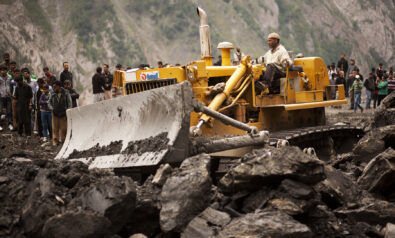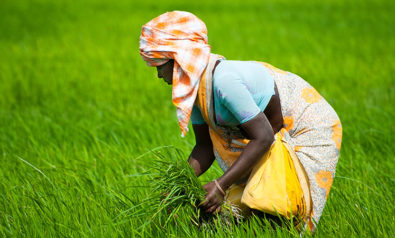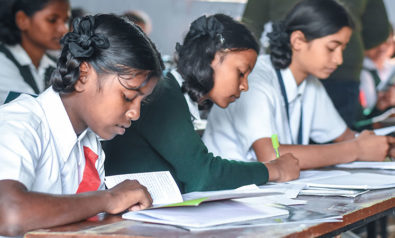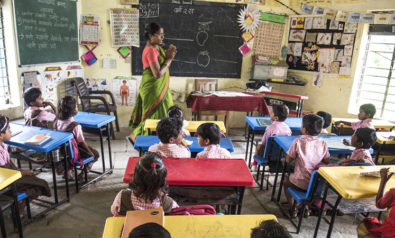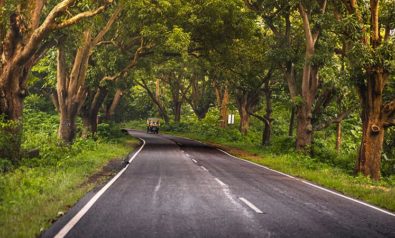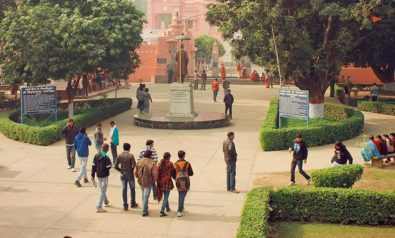As India completes 73 years of independence, agriculture has emerged as a mainstay of the economy. Despite the COVID-19 crisis, Indian agriculture is poised to grow by an estimated 3% in 2020-21. Shaktikanta Das, the governor of the Reserve Bank of India (RBI), has acknowledged that agriculture remains a “beacon of hope” at a time the economy is shrinking.
The government has announced a new agricultural policy that has drawn both supporters and detractors. Farmer protests have broken out in parts of the country. About 50,000 have marched to New Delhi from the agrarian state of Punjab, objecting to the loosening of price, storage and sales regulations that have traditionally shielded India’s farmers from the free market forces.
Land Reform Can Transform India’s Economy
READ MORE in this 360˚ Series
As of August 25, the International Monetary Fund projected India’s real GDP growth to be 4.5% in 2020. This shrinking of the economy in a country with a growing population could lead to a major crisis. Already, jobs are scarce, industrial production has declined, services have suffered and demand has plummeted. Even after decades of independence, agriculture remains “the largest source of livelihoods in India.” As India gears up to celebrate Mahatma Gandhi’s 151st birthday, there is no better time than now to achieve the Gandhian vision of rural self-reliance.
Blessing in Disguise
COVID-19 has made rural areas more important than ever. On March 25, Indian Prime Minister Narendra Modi announced a nationwide lockdown. It took the country by surprise. Millions of urban migrant workers were left with little choice but to walk home to their villages. Carrying their meager household possessions and with their small children in tow, many walked hundreds of kilometers, suffering thirst, hunger and pain. Some died en route.
India’s Economic Survey 2016-17 estimated the “annual inter-state migration [to be] about 5-6.5 million between 2001 and 2011.” In 2020, this migration has been reversed. People who fled rural areas for urban jobs have returned home. Chinmay Tumbe, a professor of economics at the Indian Institute of Management Ahmedabad and an expert on migration, estimates that 30 million migrants might have returned to their villages since the lockdown began. The number could be as high as 70-80 million if reverse intrastate migration is accounted for.
The reverse migration from urban to rural areas might be a blessing in disguise. Over the last few decades, urban migration has led to overcrowding of cities, the proliferation of slums and much misery for poor migrants. In cities, they have lacked community, cultural moorings and social safety nets. The massive migration to India’s cities was a result of failed economic policies that focused on megacities while neglecting villages. Several studies have found that at least 60% to 70% of the migrant workers who returned to their native places are unlikely to return back to the cities, at least not in the near future. The millions of migrant workers, whom I refer to as agricultural refugees, flocked to cities because the government’s economic policies kept them impoverished.
A recent study by the Organisation for Economic Co-operation and Development in collaboration with ICRIER, a New Delhi-based think tank, concluded that Indian farmers suffered a cumulative loss of Rs. 45 lakh crore (over $600 billion) between 2000 and 2016-17 because of such policies. Subsequently, the NITI Aayog, a policy think tank of the government of India, admitted that, between 2011-12 and 2015-16, the growth in real farm incomes was less than 0.5% every year. It was 0.44% to be exact.
Since then, the growth in real farm incomes has been near zero. With farm incomes growing painfully slowly and then stagnating, what else could be expected from the rural workforce but migration to cities where menial jobs as daily wage workers give many the only shot at survival?
Despite the Hardships
Despite these hardships, Indian farmers have toiled hard to produce a bumper harvest year after year. This has led to overflowing food stocks. Reports show that this abundance of food grains has come in handy. The government has been able to provide subsidized rations to over 720 million people during the four months of the post-COVID-19 lockdown. In addition, the government has been able to provide free rations to the needy.
A buoyant agricultural output has hidden a severe agrarian crisis. Farmers get little money for their produce. With less money available in their hands, rural demand has dipped. This had led to a slowdown in the Indian economy even prior to the lockdown. In a country where the agricultural workforce accounts for nearly 50% of the population, the surest way to bolster the economy is to create more rural demand. This involves providing farmers with decent incomes.
The lockdown has increased downward pressure on farm incomes. It coincided with the rabi (winter crop) harvest season and resulted in a crash in demand for winter produce. Farmers suffered huge losses in the case of perishables such as vegetables, fruits, flowers, poultry, dairy and fish. Not all news is grim though. On May 15, the United States Department of Agriculture estimated that India is on course to produce “a record 295.7 million metric tons, with estimated record rice, wheat and corn production.”
For the next kharif (monsoon crop) season, the sowing area coverage of summer crops has increased by 13.92% as compared to last year. With rains expected to be normal, and with a much higher area under cultivation, the kharif harvest will be bountiful just like the rabi one. It seems that in these times of crisis, agriculture alone provides a ray of hope in India.
Aim for an Economic New Normal
The coronavirus pandemic has come as a timely reminder of the limitations of dominant economic thinking. Its inherent bias and blind spots stand exposed. For the last two centuries and more, economics has sacrificed agriculture on the altar of industry. The dominant assumption is that industry drives productivity and growth.
India has never quite managed to industrialize like, for example, the US or China. Still, it has kept farm incomes low and neglected public investment in agriculture for many decades. As per the RBI, this investment hovered around 0.4% of the GDP between 2011-12 and 2017-18. It is little surprise that agriculture has floundered in India.
The time has come to change outdated economic thinking. Agriculture matters to India because it employs a majority of the country’s population. It provides food security to 1.3 billion people whose ancestors suffered repeated famines until a few decades ago. COVID-19 gives the country the opportunity to return not to normal, but to a new normal.
The return of migrant labor to villages gives India the opportunity to reinvigorate its rural economy. The country must tap the socioeconomic wealth of rural enterprise, its diversity, and the traditional knowledge base. Prime Minister Narendra Modi’s vision of Atmanirbhar Bharat — a self-reliant India — can only be achieved through a focus on agriculture. A sharp focus, sensible policies and public investment can unleash growth not only in the sector but also in the country.
The views expressed in this article are the author’s own and do not necessarily reflect Fair Observer’s editorial policy.
Support Fair Observer
We rely on your support for our independence, diversity and quality.
For more than 10 years, Fair Observer has been free, fair and independent. No billionaire owns us, no advertisers control us. We are a reader-supported nonprofit. Unlike many other publications, we keep our content free for readers regardless of where they live or whether they can afford to pay. We have no paywalls and no ads.
In the post-truth era of fake news, echo chambers and filter bubbles, we publish a plurality of perspectives from around the world. Anyone can publish with us, but everyone goes through a rigorous editorial process. So, you get fact-checked, well-reasoned content instead of noise.
We publish 2,500+ voices from 90+ countries. We also conduct education and training programs
on subjects ranging from digital media and journalism to writing and critical thinking. This
doesn’t come cheap. Servers, editors, trainers and web developers cost
money.
Please consider supporting us on a regular basis as a recurring donor or a
sustaining member.
Will you support FO’s journalism?
We rely on your support for our independence, diversity and quality.



